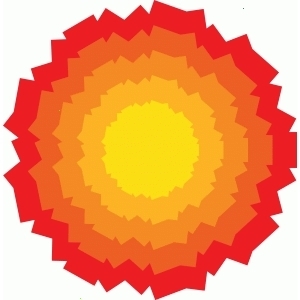No, this isn’t a cast iron thing. Using stainless pans, you can get nonstick effects that, in my experience, far outperform Teflon anyway. The process is called “spot seasoning.” I have cooked crispy, cheesy rice noodles with eggs with zero sticking.
I love my cast iron pans, but stainless is my daily go-to. Added bonus: use 100% copper wool to clean your stainless pan. The copper-coated wool at most grocery stores is problematic; you might get a few uses out of the coated garbage and then it starts shedding metal bits.
Don’t know who needs to hear this but you don’t need to season stainless steel. You just need to pre-heat it correctly for it to gain non-stick properties.
You have to pre-heat to around 400 degrees Fahrenheit before you put anything in the pan - including oil. You know its good when you drop some water in and it immediately beads up and glides across the entire surface. If it boils and evaporates, the pan is still too cold. If it beads up and starts to glide but freaks out in a certain spot, you have a cold spot in your pan. You’re trying to achieve the leidenfrost effect
Keep in mind that in a lot of dishes you actually want some of the food to stick to the pan and become [frond].(https://www.thespruceeats.com/all-about-fond-995681) Then you deglaze it later with some kind of wine or stock.
Stainless steel is perfect for this kind of cooking. I’ve been using it exclusively for years. Its versatility and low maintenance is why all the best kitchens in the world use it.
Fond. Fronds are parts of a tree.
Thanks for the tip about preheating! I bought a set of Allclad mostly so I could go from stove to oven to finish, but haven’t bothered to learn how to correctly cook eggs in them (have a carbon steel crepe pan that is the designated egg pan, highly recommend). The rest of the reason for them is that they are nigh on unfuck-up-able.
In a good non stick pan you can fry an egg without any oil at all, so no, adding a bunch of oil is not a replacement for that
Some people, like me, can’t possibly keep non-stick pans safe. I live on a sailboat, and the effort to keep non-stick pans (even ceramic) safe from damage is disproportionate to the advantages.
There are other cases, such as people who own birds. Overheating Teflon pans can result in PTFE toxicity in birds.
Even easier, heat the stainless steel pan until water balls up and skitters/rolls across it instead of evaporating.
Add oil and you can fry an egg on that pan
Can someone link to the actual fucking article describing how to do the spot seasoning method?
Recipe:
1 egg
3/4 cup of your favorite oil
1 medium banana
1 pinch lemon zest
Put oil in pan over medium high heat until oil just smokes, allow to smoke for 15 seconds, then reduce temperature to “egg making temperature”. Add egg. Burn the shit out of that innocent bastard and push it around while repeating “egg slide freely!”. Remove your egg with a crispy, brown bottom and wet, runny whites from the skillet. Reserve oil.
Into one large coffee mug, pour your oil, add lemon zest.
Last, throw all this in the trash with your Teflon skillet, and eat the banana.
Howtobasic is that you?
Certainly about as funny.
I keep seeing people urging to go back to cast iron or stainless steel, but when I left the nest 5 years ago, I picked up ceramic pans, and you can use them the same way as teflons and I have yet to lose the nonstick.
Some people, like me, can’t possibly keep non-stick pans safe. I live on a sailboat, and the effort to keep non-stick pans (even ceramic) safe from damage is disproportionate to the advantages. Also, I am away from resupply for long periods of time. If my pan gets damaged, I can’t just hop down to the store to replace it.
Don’t use bar keepers friend to clean them. That fucked up ours.
Could be cheaper enamel. Le Cruset specifically mentions it in their cleaning instructions
Bar Keeper’s Friend, or a paste of baking soda and water, also comes in handy for cleaning tough stains, oil residue and marks on your Dutch oven as well
I use it on my enameled dutch oven all the time and I’ve never had an issue.
Le Creuset enameled cast iron isn’t the same kind of thing as the ceramic nonstick the person upthread was talking about.
Don’t those use very similar coatings as Teflon?
I need my pans that need to be treated like a princess and then fail anyway in a few years and need to be thrown and replaced. I need to keep doing it cause those poor people at teflon plants cant have a job creating one of the most polluting chemicals out there
Also for skillets you can just buy ceramic. As long as you don’t let them sit with food on them they stay pretty non-stick for years.
Some people, like me, can’t possibly keep non-stick pans safe. I live on a sailboat, and the effort to keep non-stick pans (even ceramic) safe from damage is disproportionate to the advantages.
Huh, I haven’t treated my ceramic skillets special at all, just rinse 'em out when I’m done and throw 'em in the dishwasher, or if I have to hand-wash I can just scrub them real quick since they’re not nasty with food gunk all over them. To the best of my knowledge they don’t require special treatment, I only suggest not letting them sit with food on them because that’ll make anything harder to clean up.
The first hazard to my pans is clunking around while at sea. This is mitigable by putting a cloth in the pan to protect it from other pans. My partner made a bag to hold our ceramic pan. But then the bag got nasty moldy, as porous things always do when sitting in a compartment on a boat. Then our silicone spatula wore out, like they invariably do; I’ve had the same stainless cooking utensils for going on 30 years. The ceramic pan was given away at our next port.
And ceramic pans still wear out with use, regardless of the level of care. They just last a bit longer than traditional non-silicon nonstick pans.
Oh yeah I didn’t think about the fact that it’s porous, shit. Yeah I’ve had my ceramic skillet set for like 15 years and never done anything special with them, but also no salt water and stuff growing on every available surface. Fair point.
Bought a carbon steel pan - never looked back, it is excellent and lasts forever!
I have a well seasoned good quality one that makes eggs as well as a nonstick pan. Took time to get to that point though. Sugary American bacon is the surest way to end up having to reseason it though.
Got one too, searing steacks is wonderful but I sure can’t make eggs without garbling them!
Link to article?
My cast iron pans tend to get sticky, the sides, the handle, I’m not sure what to do about it. Any ideas? What am I doing wrong?
are you washing it? Like with soap, hot water? and scrubbing it with something like a scrubbing sponge?
Have to ask, due to the prevalence of people buying into the whole “you cant wash cast iron!” myth.
Cause, with the sides and even the handle being sticky and nasty, it sounds ALOT like just spattered grease never getting cleaned off.
Definitely this, but also if you are washing it and re-seasoning it after if you use too much oil it can cause it to get sticky.
Thats not really “re-seasoning” when you oil it after washing, its just rust prevention if you don’t have a good cure on the entire pan… I would only oil a pan down if I’m putting it into storage for a good long while… and that oil gets washed off before I use it, cause even the best cured pan always seems to develop some rust in long storage otherwise, and that oil will have inevitably collected dust and other unpleasantness.
My regular everyday cast iron pan just get washed, then put on a burner for a couple minutes to dry off any of the remaining water (after i towel it off), then pushed to the back of the rangetop for tomorrow.
Obviously don’t take your hot pan, immediately wash it in cold water, and put it back on a hot burner, cause… you know… thermal shock will turn it into a fragmentation grenade*
*(comedic hyperbole, for those that will inevitably take this too seriously)
edit
and on the topic of seasoning the pan… I prefer doing it on a grill, I give my pan a good, thin coating of lard, throw it on a scorching hot grill, and basically just leave it until it stops smoking. Then I’ll take it out, let it sit to cool off a bit (just a bit, don’t want it getting cold, just want it to not burn through your oven mitt and flash off the reapplied lard) before adding another layer of lard, and throwing it back on the grill, again, until it stops smoking.
Depending on the pan, if its old one I’ve had to go at with sandpaper/steel wool, I will do more coats to build up a good base… for an established pan that I’m just laying down a fresh coat on, I may only do it once, or maybe twice.
Don’t need to put 100+ coats on it and make it a mirror finish, lol.
You’re right, wrong choice of wording on my part.
no worries man. S’all good in love and cast iron.
deleted by creator
YSK that Teflon pans don’t need any seasoning and are still non-stick.
What’s with all the tinfoil-hattery on this site about teflon?
PFOA is one of the most prominent forever-chemicals and has polluted every single living creature on earth (including you). PFTE is another one.
PFOA causes tumors and has been found in 100% of the places (including living creatures) that is has been tested for. Every human, every animal, every river, every forest, every senior, every newborn.
The real “tinfoil hat” is how we let them get away with it. Oh? They had money and were in America? You don’t say.
Teflon itself cannot penetrate your cells and actually do leave your body without harming you in the long run. However other forever chemicals do add up and cause cancer. Check video from Veritassium who imo explained it very well. https://www.youtube.com/watch?v=SC2eSujzrUY
PFOA was banned 10 years ago in the US and 20 years ago in the UK.
Any evidence that PFTE is harmful to that level?
DuPont/Chemours and 3M just add or subtract from the chain of the molecule and call it something new. It’s the same poisonous shit.
PFOA was banned, but PFOS and other very-slightly-different forever chemicals are not banned, therefore get around those regulations due to that technicality. Also, the current US administration is looking into removing a lot of those regulations.
No tinfoil hattery for me. I love how Teflon pans perform. Some people, like me, can’t possibly keep non-stick pans safe. I live on a sailboat, and the effort to keep non-stick pans (even ceramic) safe from damage is disproportionate to the advantages. Also, I am away from resupply for long periods of time. If my pan gets damaged, I can’t just hop down to the store to replace it.
There are other cases, such as people who own birds. Overheating Teflon pans can result in PTFE toxicity in birds.
Thanks, T-Fal
I think it’s a bit disingenuous to say that any other cookware material outperforms Teflon nonstick, and actually harms the conversation when trying to convince people to switch to an alternative. Nothing is going to beat the nonstick performance a fresh nonstick pan, and that’s perfectly fine. I don’t need a pan so nonstick that I could start an egg in a cold pan with no oil. Well-meaning people run the risk of frustrating less experienced cooks when they assert that they’ll get the exact same or better results from a stainless steel pan, which just isn’t true, especially right from the start. Stainless has plenty of other benefits that make it more than worth the learning curve to use. Sometimes you want some stick, to build fond for a pan sauce. Or you need a pan that can go from stovetop to oven to finish cooking.
This post wasn’t aimed at you specifically, I just wanted to vent at what I feel like has been an uptick in cookware bros flexing their ability to reduce sticking on stainless steel (“I’m so smart I name dropped this little-known thing called the Leidenfrost effect”). I quite like your video and post because they show an alternative way to reduce sticking on stainless that is definitely more forgiving for a beginner than trying to hit a specific temperature range.
World is a better place when we dont buy pans that are designed to give you cancer and fail in a few years… Teflon is reserved for the 1-2 dishes that require non stick at a low temperature. The few dishes that I cant think of right now but i’m sure they’re out there.
You won’t find any disagreement from me there. I just think that when you set the expectation too high (stainless steel can actually be more nonstick than Teflon), people will give up and just go back to nonstick pans when they can’t achieve those results.
Regarding dishes that are solely the domain of Teflon, I think it definitely has a place for dishes that already have a high bar for execution. A perfect French omelette is hard enough on a nonstick that adding another layer of heat management puts it out of reach for most people. But like you said, there’s not much that I’d use Teflon for, so I just don’t have one after switching to induction.
I’m glad I am reading your comments. I am that kitchen novice. And so is my husband. We’ve been trying to move away from Teflon since we had a baby, and are struggling to make stainless steel worth the extra time it takes to clean. I’ve been feeling very frustrated that despite trying to do the heat it up and use oil thing, it’s still awful, and I figured either we’re dumb and bad or everyone online is just lying. We just went back to Teflon, because people online say it should be perfectly non stick and then also that you can only clean the stainless steel with a soft cloth. It’s hell.
First of all, congratulations on the baby! :) If you don’t mind me asking, what sorts of dishes are you struggling to make on stainless steel?
I’m going to be presumptuous here and make a few suggestions, so feel free to push back if you’ve tried some of these things and they haven’t worked or aren’t as easy as I’m presenting. If you do still want to transition to stainless, it’ll be easiest to start by only doing it bit by bit, rather than all at once. Dishes that naturally contain some acidic element (like tomatoes, citrus juice, vinegars, or wine) will be easiest to cook without a bunch of sticking. I’d recommend starting with a tomato-based pasta sauce. If, as it reduces, you notice bits sticking to the sides, it’s easy enough to loosen up just by stirring a bit of the sauce onto it. Once you’re more comfortable with this, you can try sauteing vegetables in the pan. Even with preheating, it’ll might result in some stuck on bits, but adding a splash of lemon juice or champagne vinegar at the very end and agitating all of the ingredients should both brighten up the overall dish a bit as well as lift most (if not all) of those browned spots you saw. When it comes to searing meats, you might also have to adjust how often you’re flipping. If it feels stuck when trying to flip it for the first and second time, waiting a bit longer will eventually lead to the meat releasing from the pan. After the initial release on both sides, it won’t be anywhere near as sticky and you can flip as often as you’re used to. I wouldn’t worry about any browned spots either. While resting the meat, you can toss a bit of wine along with some stock in, turn up the heat, and stir continuously to loosen those bits up as well as flavor your pan sauce. Once it’s reduced to about your desired consistency, you can throw a slice or two of cold butter in and stir for a relatively low effort but still tasty pan sauce. Plus, you make washing the pan much easier. I think this tends to be easier than trying to achieve a nonstick effect with stainless, and sort of demonstrates that there’s ways to work around the issues some people have that aren’t strictly heat management.
My cat really wanted to press the submit button halfway through and force me to edit it to complete the thought as quickly as possible. Sorry if it isn’t quite helpful, and I’d be happy to follow up on any of it.
That’s all wonderful advice. I’m trying to make scrambled eggs. It’s one of the baby’s favorite foods. Any advice there?
Unfortunately, scrambled eggs are one of those things that are a bit harder to cook in stainless. If you’ve been using oil, switching to butter can help with some of the sticking, but you might end up using more butter than you’d like and some heat management is still necessary. Honestly, a lot of people keep a single nonstick frying pan just for things like eggs, seared fish, or sauteed tofu, so don’t feel pressured to make it work on stainless.
If you really feel compelled to move off Teflon completely, a carbon steel or cast iron pan will be much better suited to replacing nonstick for the instances where you’re getting excessive sticking, at the cost of needing to avoid acids in the pan. But if I were you, I’d just keep using my Teflon pans until there’s any flaking or chipping before making up my mind.
Thank you for the response
Got 2 cast iron pans, one probably needs a good reseasoning sometime but the other is really good right now. Possibly not as good as brand new Teflon, but how long does Teflon remain good as new? Mine has long passed the age at which Teflon should be disposed of too, so how much less pan waste am I making by using cast iron?
I can also use it over a firepit, just brush the ash off the base when I bring it back in.
I’d posit that your well-loved cast iron looks even better than new. For me, moving off nonstick pans was about sustainability (and money waste, who wants to buy a 2 year subscription to cooking?), but I can’t get over how beautiful some cookware gets just from being used. The patinas on cast iron/carbon steel pans reflect the dedication of their owners to a craft, which I’ll take any day over a colorful pan whose surface flakes just from looking at it.
As a wonderful cook, I resent just about every piece of cooking advice. They’re just oft-repeated, poorly-understood concepts.
For example, I love cast iron. It’s my go-to for nearly all my cooking. I cannot stand cast iron people. They think their lump of iron is a baby that needs to be spit polished and pampered like a Fabergé egg. No, you beat the ever-loving hell out of it, abuse it, soak it in water, leave it to rust, abuse it with scouring pads… then you rub a 1/16th tsp of oil on it and get on with life/cooking.
Edit: Same thing with knives. Before you give me a huge sermon about how to sharpen and care for knives, why don’t you understand that you can use a $5 German steel chef knife, a Rada quick sharp and a hone. For the amount most people cook and prep, that’s going to last 30 years. I cook every single meal from scratch, there’s 20,000 cutting board Kms on my $5 knife. Yet if the subject comes up, people are linking $300 knife reviews… Proof they want to have a knife, not use a knife.
I agree with both your original comment and the edit, but especially the bit about cast iron. Neglecting mine for an extended period led to uneven patches of seasoning, but when I got round to giving it a proper scrub, it was like hitting a reset button. I’m going to try to be better at basic seasoning/maintenance this time, but the joy of cast iron is knowing that it’s super forgiving if you do mess it up.
Tangential to your edit: I enjoy being able to sharpen knives, but that’s mostly because I’m a nerd who has other tools I need to sharpen anyway, so I already have the stones. Something that I found striking though is that when I was learning how to sharpen knives, I asked if I could practice on various friends’ kitchen knives. Most of them were poor students, so I sharpened many cheap knives, and I was impressed by how well some of the cheaper ones performed compared once they were sharp. They held their edge for surprisingly long too.
I’m quite fond of my Wusthof chef’s knife, which was a bit of an indulgent treat for myself, but I am utterly baffled by the gear acquisition syndrome that so many seem to fall into. It’s not just that prospect of someone who barely cooks buying a $300 knife that perplexes me, but that so many of these people keep acquiring more knives. If they said that collecting knives was just their hobby, and that they were never intending to actually use them, then I’d shrug and say fair enough. That’s pretty rare though — the underlying implication that these people seem to operate under is that the fancy knives make you a better cook (and that the perfect knife will make good cooking into an effortless, joyful endeavour). It’s an odd culture that’s developed.
You’re making some great points
I like that you like sharpening, my grandfather taught me how as well and it’s a pleasure to know how. I have also been surprised how some “bargain basement” cheap ones are higher quality steel than the expensive Henkels, just as one random example
Maybe it’s my fault, but I don’t think so, I think it just revealed a deeper truth to me…
I was given professional chef knives by someone who dropped out of cooking school. I mean, you could just hold the chef knife in your hand for a second and tell you are dealing with a completely “next level” tool
I think I had that knife for all of 5 days before something took a massive chip out of the edge. I suppose a person could argue it was my fault. I really don’t think it was, I think it was just a freak incident. But the timing of it revealed to me that I’m just going to stick with my cheapos. There is too much going on with cooking to have to stress about if my little delicate knife can handle a tap against a pan edge
That chipping incident disabused me of many false notions. I can absolutely acknowledge it made prep quicker, but I did the mental math and realized I’m not going to pamper and baby knives my whole life. I need to be able to have tools that if they break, they go straight in the trash and I just get another one. In the forensic analysis, it’s much cheaper and easier to go that way.
This is for me as a home cook - I can acknowledge if I worked in a professional environment I would need pro tools that I would baby and pamper, but my home kitchen is not the place
I went for a cheapish knife, like £20 or so each for a few knives. My thinking was I don’t want the 20 knives in a set for £19.99 that are probably made of stamped aluminium and hollow plastic handles, but by £20 you are getting something good without spending a silly amount of money.
As for the cast iron I won’t deliberately leave mine to rust, but happily use it over a fire and then just wipe off the worst of the soot/ash. But it’s black anyway so no one is going to notice spot buildup. Just remove anything that would easily brush off on other things.
I agree with your approach
I think knife sets are a bit of a con job because a good cook really just uses one or two. I’m looking at my knife block and I’m seeing 9 different knives in there, two of them get used. Two… The $5 el-cheapo chef knife and a $1 paring knife. I haven’t used the serrated bread knife in 10 years, because my chef knife is sharp enough to shave my beard
I’m also kind of exaggerating a bit on my prices. Yes I’ve paid $5 or 6 but I time the purchases to be right after Christmas when they’re on clearance. I’d say in “real money” and with recent inflation I’m using about a $35 CAD knife
I also find the pricing of them to be completely arbitrary. I have been gifted knives that should be extraordinarily high quality based on retail price… And found the handles/plugs were falling off, or they were degrading within weeks!
I don’t understand why we live in a world where someone can sell a $500 knife that in terms of manufacture and material cost, is almost indistinguishable from a no-frills budget one. And in many cases, conspicuously worse in every measurement!
Been looking at sharpening stones a bit today, genuinely wonder if I could instead get 2 slate roof tiles and grind them against each other until the surface is flat enough to use to sharpen a knife. Would cost almost nothing.
Or bits of slate for making walls, would have more thickness to it but otherwise more irregular sizing. Could chip it to the right kind of size first and then grind the stones smooth though.
I love the wild, devil may care, DIY approach!
It’s the type of lunacy that I would try just to see how it works hahahah
I’ve said in many other threads in regards to cooking, and my knives, that I admit and confess, in full, that I am a complete rebel and sinner
I use a dual wheel Rada quick sharp to blast the correctly angled edge, knowing full-well that it shears off material, and then I quickly use my 14-in hone. I am completely aware that I am gradually eroding my knife, but I don’t care, it’s sharp enough to shave a buffalo and it takes me 8 seconds
I know by official standards and reckoning… I am abusing my knives and doing it “wrong”
But I cook every day, and it takes me 5 years to go through a knife. I completely gave up on sharpening with a stone a decade ago. My attitude is “fuck it, I’ll just get another knife in 5 years, this is a primary tool for me and I’m not going to baby them”
I would love to know how this works out for you though!!! I can absolutely envision a scenario where you angle these pieces of slate and you make yourself your own version of a quick sharp!! This is madness though, which is why I love it LOL
Knife hipsters: You must spend £200 on these whetstones!
Me: Haha, £1.50 roof tile.
Shame I don’t live near anywhere to get slate or another suitable rock type, would be a few hundred miles away. The rock here is rather crumbly sedimentary rock from what I have seen. Slate coasters could be dual purpose.
Now you’ve got me wondering what kind of materials are cheap as hell, come flat out of the production line, and are still more durable than the steel you’re sharpening.
This whole convo has got me thinking!
There’s a joy with high crafted tools that you can’t really get with an average equivalent. It usually comes down to comfort and looks. Is it worth it? Depends, I suppose.
I’ve cooked every meal from scratch for 5 years
There’s one tool that was worth the $50 and that was a garlic press, the rest was money wasted
It’s much better to understand your tools and buy appropriately, instead of just assuming that lots of money is the answer
That’s my opinion and experience
It’s the simplest thing in the world with a stainless pan. Bring up the heat, add in some oil, wait for it to smoke, wipe it out with a cloth, in with cold oil, add in your food. It won’t stick.
I just let it go until leidenfrost, add oil and roll oil around and its good to go. If you are making eggs, reduce the heat and wait a bit. Only difference vs teflon is that you put the pan on heat while you are prepping to ensure thorough preheat. Havent used teflon in years. Havent missed it either, I make pancakes (local ones are thin, not quite crepe like but thin) with only one knob of butter at the beginning just fine. No oil in pancake batter either.
No oil in your batter? I wanna know more. Doesn’t that make the pancakes too chewy?
eggs, flour, milk, baking soda, bit of salt, bit of sugar. Thats the common batter. Ratios were like 1-2-3 or something for the main ingredients. Idunno, nobody has ever told me the recepie.
I might have to try this next time. Might just stick to the King Arthur Flour ratios I like to use, but no oil. Trick is probably not to overmix.
Thanks for this but I will stay say teflon is simpler (not better!)
Fresh teflon is. Then you start throwing it away in a year or two since your teflon coating has FLAKED off despite using only wood-plastic-silicone and handwashing it carefully.
And then you read TEFLON FLAKES cause cancer.
And then you start putting two and two together.
The most annoying thing for me with Teflon was that in two years or so it is no longer nonstick, so your pans have essentially an expiration date.
Not to mention that it will be scratched and danger to you and all around you long before that.
I preach the gospel of our lord and savior stainless steel pans!
A soft (e.g. silicone) spatula is all you really need to avoid damaging a non-stick pan. And they are incredibly useful for other uses (a rubber flipper is awesome if you are perpetually impatient when it comes to flipping meat and don’t want to damage the skin).
But yeah. They are inherently a consumable which is why nobody should ever spend more than 20-ish (pre-trump) USD on one. It is up to an individual to decide if they would use it enough to justify that.
Sometimes the food can do it too – I scratched my last nonstick pan with a silicone spatula because I ground black pepper on my eggs and caught a craggy piece just right while flipping. After being super careful for months! So irritated.
Id recommend going for carbon steel instead of teflon if all clad or stainless steel is too much work.
For like $40-100, they heat up insanely well, are very light and will last your lifetime. They form an excellent non stick coating after several uses just like cast iron.
I bought two a couple of months ago and I am never going back to anything else.
If you have a strong burner, the recommended carbon steel wok works great too, even on my electric stove. Im stunned at how fast it heats up and what a good job it does even in my inexperienced hands.
Kenji, a serious eats alumni, has an award winning wok book I picked up at the same time. It’s a beast, covering tons of different cuisine and methods. Really great combo.
+1 on the carbon steel pan. Eggs slide right off mine.
I like the heat retention of a good heavy and smooth cast iron best, and you don’t have to season it very often at all. I pre heat it, add a little butter or oil, and do my cooking. Only way to go if you aren’t cooking a steak or burgers outside. Eggs slide like new Teflon.
right? six steps and having to deal with hot oil every time or use teflon and have a slightly higher risk of cancer and zero extra steps to cooking. I’ll stick with teflon and hope for a global war to wipe us all out before I have to worry about cancer.
I want to shun you but it seems like you’re struggling enough 😑
I have so many uses for this sentence in my life.
If you’re lazy just say that
i am lazy but i’m not even saying doing less steps is worth the cancer it gets you. I’m just pointing out that simplicity isn’t really a strong side of stainless steel when comparing it to teflon since simplicity is basically the only thing teflon has going for it.
Afaik Teflon isn’t carcinogenic. Veritasium recently made a video about teflon and more importantly PFOA used to produce teflon.
Here if interested https://youtu.be/SC2eSujzrUY
Extremely weird thing to be elitist and off-putting about.
I add oil, just enough to barely coat the pan, and then tap a teeny drop of tap water from my finger onto the pan. Once the drop pops (if it got touched by the oil) or simply boils away, I can start cooking.
Additionally: butter. Butter somehow doesn’t stick for whatever reason, even if the pan isn’t fully heated up yet.
Same here, but with a different order.
- Turn the heat on.
- Wait.
- Test with water. If it doesn’t sizzle, wait and test again. If it does sizzle…
- Add oil
mmmm… butter
It’s an emulsion, butter is basically cheat codes
Thanks for giving a simple summary so I didn’t have to click and watch.
“wipe it out with a cloth” I’m curious about the cloth you use and what you do it? Sounds really messy an oil soaked cloth… But you do say it’s the simplest thing…
Sometimes I forget others haven’t accepted tea towels into their heart. I’ve got a dozen or more cloth towels around the house for mopping up. It all comes out in the wash. Cotton ones won’t burn readily, so they’ll dry out a hot oily pan no problem.
Paper towels work fine. Just make sure they’re pure paper and not mixed with synthetics or weird scents or whatever.
Does this work with cast irons too?
Update: just made eggs sunny side up this way on my moderately unwell seasoned cast iron pan. Worked amazingly well. Who knew I was putting too much oil… I brought the temp down a little after cracking the eggs in.
Hell yeah buddy
belive it or not with enough heat you can cook eggs in a cast iron skillet without any oil ~(Some char may remain in the pan, restrictions apply. Please see your local pedantry department for all complaints about this advice.)~.
Been using the same set of pans for about 30 years. Just cold oil and a hot pan, get my food in immediately and same thing. I can slap pork chops in there no problem. I just have a feeling if I tried this instead of your method on a new pan, I’d be screwed.
I’m pretty sure the pan is just seasoned after that amount of time and they definitely get used daily, if not multiple times a day.
A stainless or carbon steel pan will take to the cold oil method first time. Cast iron will depend on the quality; some come preseasoned, but the quality of that varies a lot too.
I got my first nice CI skillet about five years ago and daily driving it. I talk a good game about steel pans but I just don’t enjoy them as much. You build their seasoning, it works perfectly once, then it’s gone. There’s no relationship, no satisfaction in getting a fried egg to slide freely about the pan.
Except the easiest thing in the world is just as the youtube guy said. If you use a cast iron or carbon steel, the seasoning doesnt really wash off as much, so you don’t have to re-season the thing every time you want to use it. My cast iron pans stay seasoned, even if I wash them with soap. SS doesn’t really have any benefit over carbon steel, and only a benefit over cast iron in that it’s lighter. If you want a lighter pan/wok, there’s little benefit over getting carbon steel.














